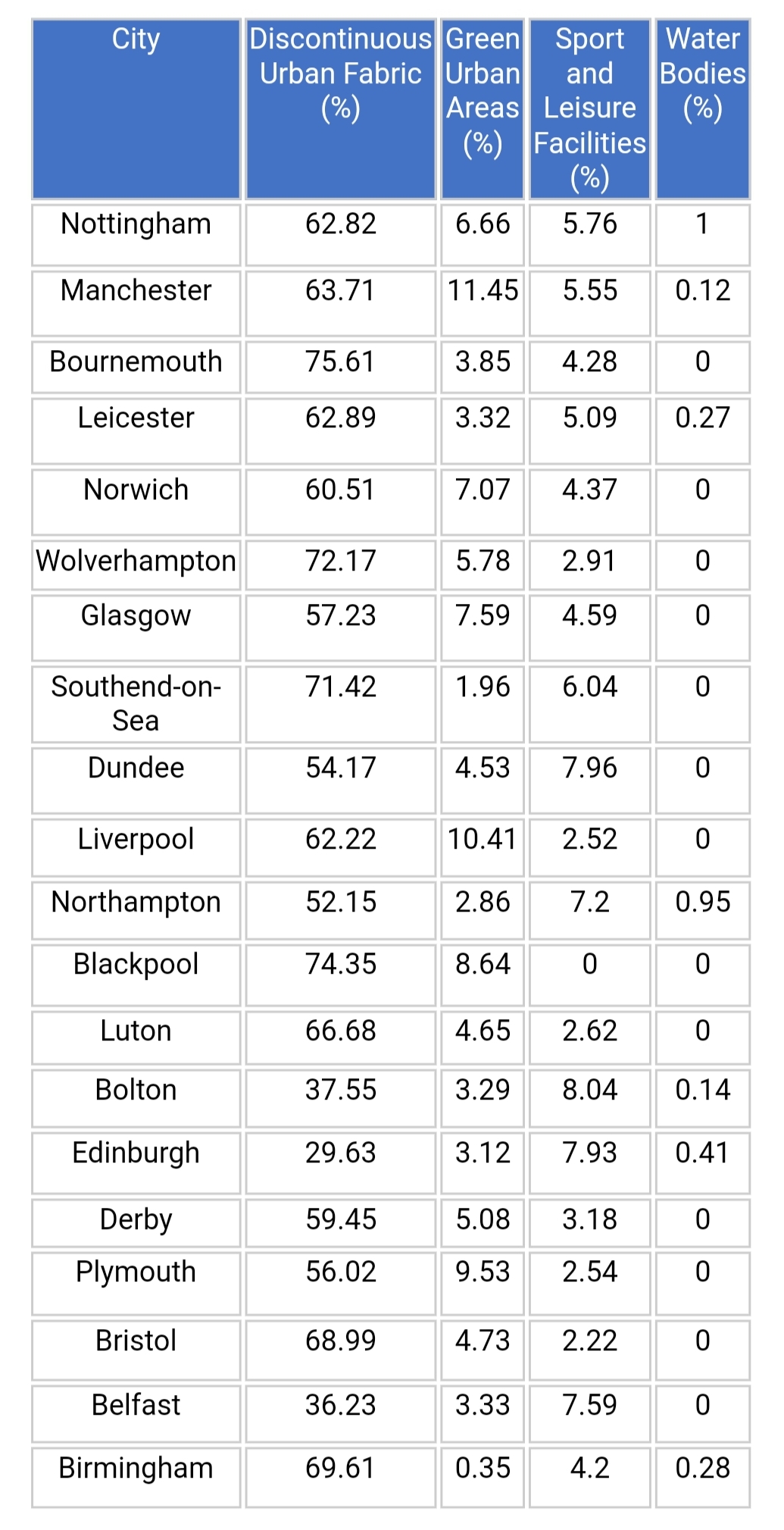According to recent government data, “An estimated 1.1 million fewer people across the UK gained health benefits from spending time in nature in 2022 compared with two years earlier.”
“The trend was caused by a drop in the number of visits to – and time spent in – nature over the last two years. The number of visits is now back to levels last seen in 2019, significantly down from a coronavirus (COVID-19) pandemic-led peak in 2020.”
With fewer people going out into nature, it might be time to bring nature to the people.
Urbanisation and climate change call for new solutions to maintain and improve the quality of life in our cities. Public green space has a positive effect on biodiversity, climate, wellness and air quality. This impact ensures that cities are becoming better places to live and work.
Research conducted by Flexioffices, in conjunction with Corine Land Service satellite data, was used to closely analyse the UK cities with the highest percentage of green space. While Nottingham took the top spot, Manchester and Bournemouth took the second and third places, respectively.
The researchers looked at 4 key metrics; The discontinuous urban fabric, Green Urban Areas, Sports and Leisure facilities and water bodies. The discontinuous urban fabric class is assigned when urban structures and transport networks associated with vegetated areas and bare surfaces are present and occupy significant surfaces in a discontinuous spatial pattern. The impermeable features like buildings, roads and artificially surfaced areas range from 30 to 80% land coverage.
“There’s a positive correlation between greener cities and happier inhabitants.” Says X of Flexioffices. “This is doubly so for people choosing to work in those cities. Greener cities often come with less traffic, more places to relax and an overall better quality of life.”
Green spaces in city centres can provide numerous benefits for individuals and communities. Here are five reasons why green spaces in urban areas are good for you:
Improved Mental Wellbeing-
Living and working in areas with abundant green and blue spaces has been linked to better mental health. Exposure to natural landscapes has been shown to reduce stress, alleviate sadness, and lift moods. The evidence suggests that the presence of greenery in urban environments fosters a sense of comfort and ease, leading to increased social interaction, reduced antisocial behaviour, and decreased feelings of isolation and stress. Flexioffices emphasises that healthy places are restorative and uplifting, contributing positively to both physical and mental health conditions.
Physical Health Benefits-
Green infrastructure provides tangible physical health benefits to urban workers. Improved air quality, less noise pollution, and reduced risks from flooding or heat-waves are direct outcomes of a well-designed green city. Access to green and blue spaces encourages physical recreation, contributing to a healthier and more active lifestyle. Public health reports, including evidence submitted by Public Health England, highlight the positive impact of such environments on the overall well-being of urban populations.
Building Communities-
Green cities promote social interaction and the creation of sustainable communities. The presence of natural environments encourages people to come together, fostering a sense of community. Accessible green spaces, such as community gardens, play a vital role in reconnecting communities and strengthening social bonds. This contributes to the creation of supportive social networks both within and outside the workplace.
Therapeutic Benefits-
The natural environment has proven to be a valuable component in therapeutic interventions for mental health and dementia. Activities such as group outings, structured walks and horticulture show promise in improving mental well-being and managing dementia. Evidence suggests that exposure to nature can positively impact patients in acute hospital settings, potentially leading to quicker recovery and shorter hospital stays. Ongoing conferences and initiatives, supported by organisations like Natural England and PHE, explore innovative practices in utilising green spaces for mental health treatment.
Climate Change Mitigation-
Retaining and developing natural environments in urban areas not only benefits individual health but also contributes to the global effort to combat climate change. Trees and shrubs in urban green spaces capture CO2 and pollutants, while sustainable urban drainage schemes act as natural retaining ponds, reducing the impact of heavy storms. Additionally, the presence of green and blue spaces helps mitigate the ‘Heat Island Effect’ caused by construction materials, particularly concrete and asphalt. Investing in green infrastructure aligns with public health goals and addresses environmental sustainability challenges simultaneously.


You can join us on our social media pages, follow us on Facebook or Twitter and keep up to date with whats going on in South Devon.
Got a news story, blog or press release that you’d like to share or want to advertise with us?




























